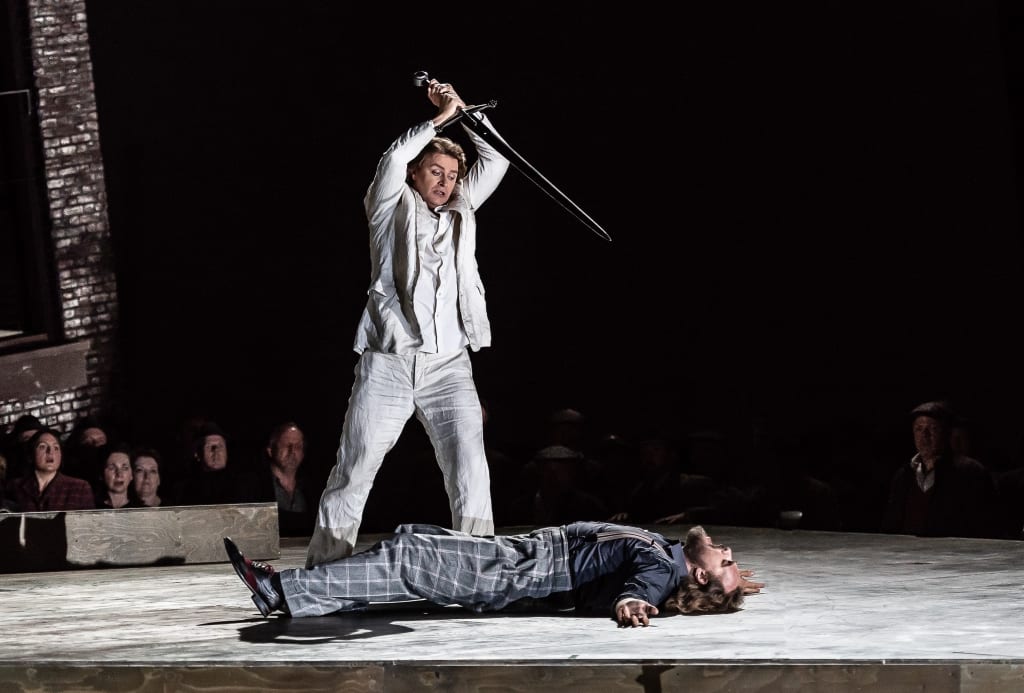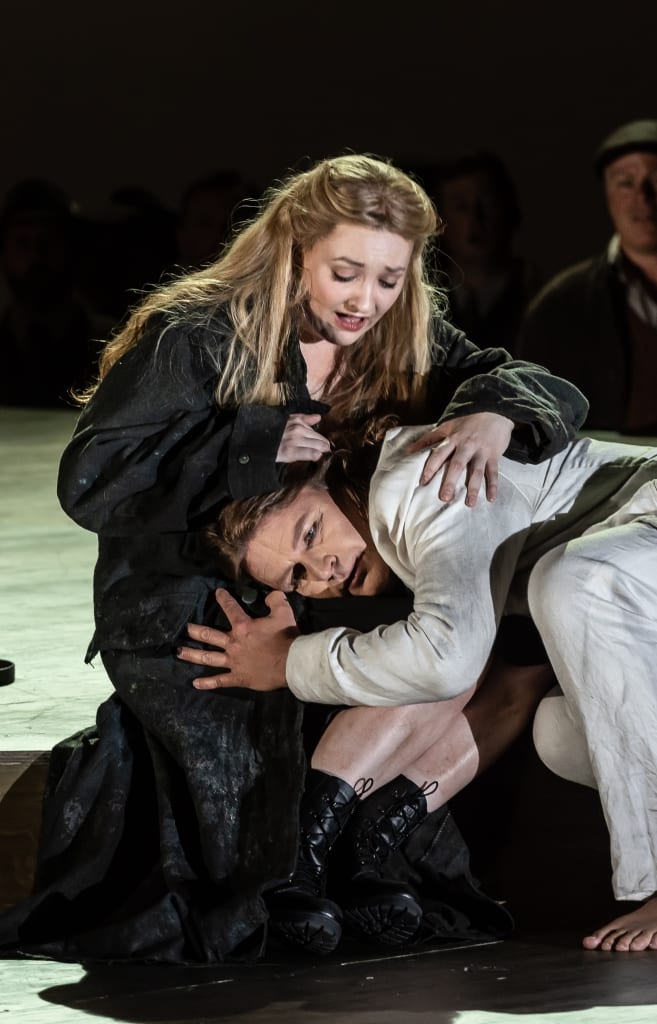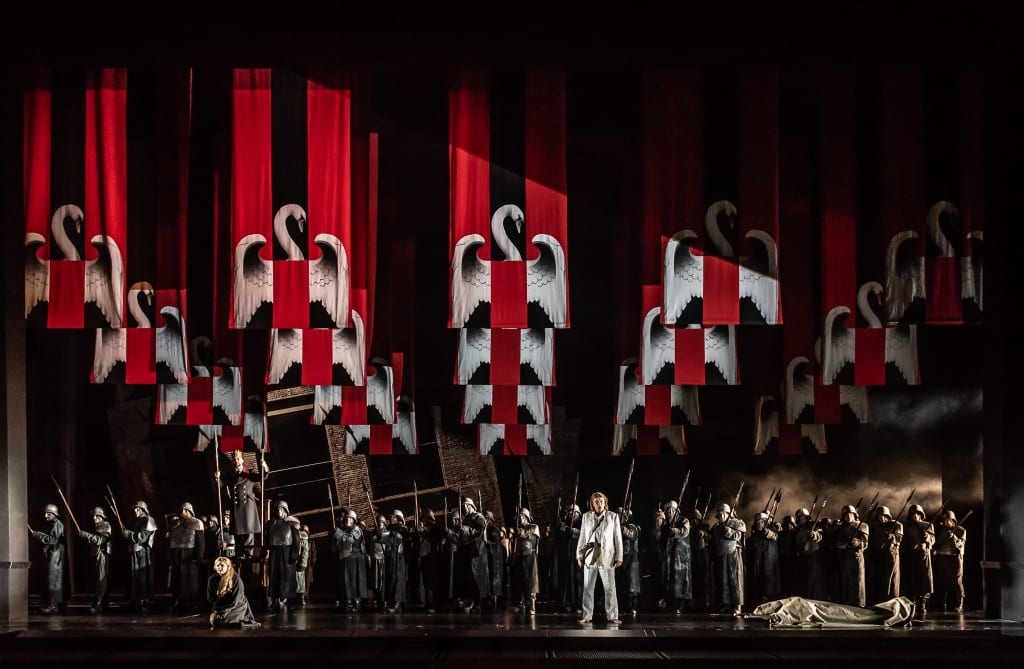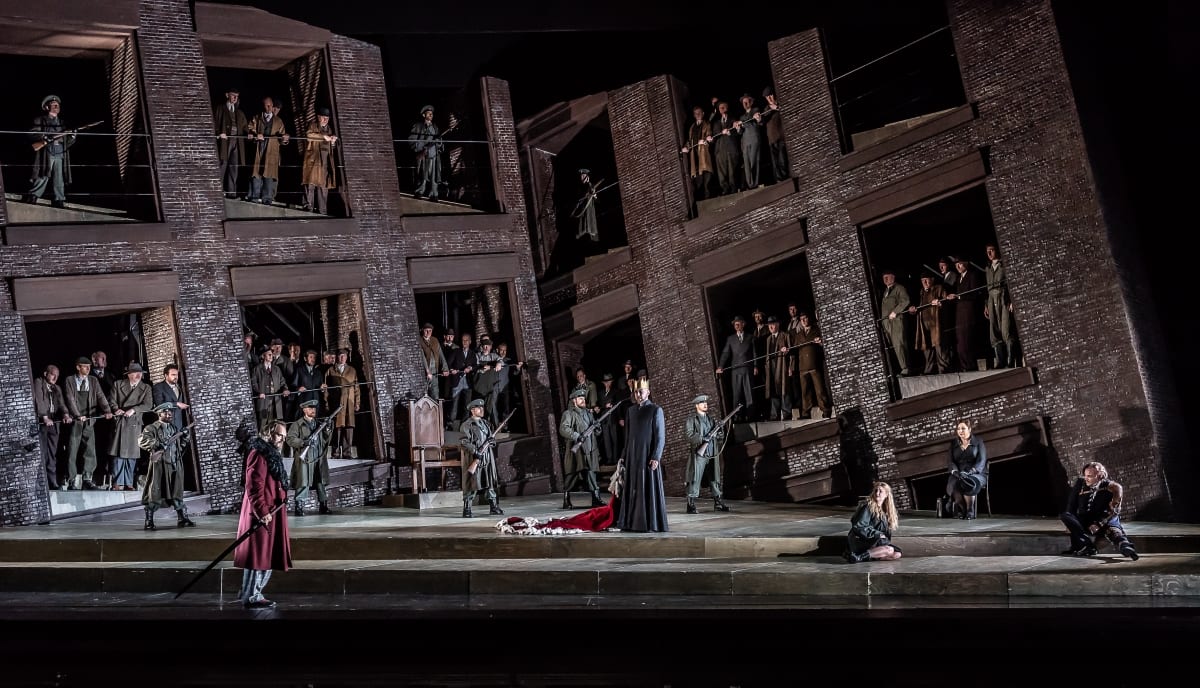Richard Wagner’s Lohengrin first premiered in the provincial city Weimar on 28 August 1850. The date is crucial, as German dignitaries had flocked to the small town to honour the German poet and statesman Goethe, who was born on 28 August 1749. The production was hailed as ‘revolutionary,’ showcasing Wagner’s mature work. Twenty-five years later, in May 1875, Lohengrin was premiered in London, at the Royal Opera House. A more recent production, directed by Elijah Moshinsky opened in November 1977, and saw altogether 23 performances over 41 years. That production kept a more traditional approach. David Alden’s bold take on the libretto in the Royal Opera’s new show is ingenious.
The storyline draws on Germanic myth, the Grail legends, and Greek tragedy. False accusations of murder, intrigue, and machinations fuelled by hunger for power, are the backdrop to the mysterious appearance of the eponymous hero, Lohengrin (Klaus Florian Vogt), the knight in armour who emerges to defend a defamed woman. The love between he and Elsa (Jennifer Davis), the late Duke’s daughter falsely accused of murdering her younger brother, the heir to their father’s Dukedom, is to be sealed in marriage under one condition: that she never ask him his name and where he comes from. The intervention of Count Telramund ((Thomas J. Mayer), driven by his Lady Macbeth-like wife, Ortrud (Christine Goerke), ultimately dooms the pair.

Vogt’s Lohengin, draped in a white linen suit, is more of a tall attractive hunk than a mysterious warrior. His operatic interpretation of the character outstrips his dramatic performance. His Lohengrin is more resolute than regretful. The young soprano, Davis, introduces to her character nobility and anguish, as well as hesitance and a touch of impulsiveness. Mayer’s Telramund is an embattled aristocrat, torn between a thirst for power and a sense of duty; yet, Mayer conveys more villainy and vengeance than torment when he finds out that he has falsely accused Elsa.
Goerke’s Ortrud, Telramund’s wife, interprets the role with conviction musically and dramatically. Her voice is perfectly suited to the character’s wiles and sinister asides. Her dominating presence is constant, even when she is silent. She first appears on stage dressed in severe black attire, towering like an SS battle-axe, making sure her plans are executed.

David Alden’s cogent direction is well-supported by Paul Steinberg’s design, Gideon Davey’s costumes, and Adam Silverman’s outstanding lighting design, which powerfully amplifies the drama by drawing on modern German history during World War II. The heraldic eagle with its head tilted to the left becomes a heraldic swan, slightly more alluring with its long neck and projecting hope together with menace from the red banners on which they are superimposed. The chorus first appears in costume resembling a group of workers (as Hitler entered politics by joining the German Workers’ Party). The ineffective King, garbed in black and a wearing a gold crown on his head, mirrors Hindenburg, the weak German president who bowed to Hitler.
The staging of Act II drags on a little and seems to loose some of the dramatic tension offered by the music. Nonetheless, this is an inspired production with all-round excellent performances musically and dramatically. Highly recommended even to those who shy away from Wagner’s operas.


